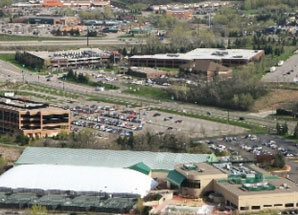Plekkenpol Builders, Inc.
401 East 78th Street, Bloomington, MN 55420
(952) 888-2225
Ice Dams
What causes ice dams and what you can do to prevent them
Ice dams are one of the many challenges that homeowners face during the winter months. Although we have little snow on roofs and no ice dams at the moment, winter is not over! If you do experience roof leaks when ice damming is present, it is important to understand what is happening and take action.
What is an ice dam?
An ice dam is a ridge of ice that forms at the edge of a roof and prevents melting snow from draining off the roof as it should. The water that backs up behind the dam can leak into a home and cause damage to walls, ceilings, insulation and other areas.
What causes ice dams?
Ice dams form when heat collects in the attic and warms up portions of the roof, but not the eaves. Snow begins to melt on the warm roof, but then it freezes when it reaches the cold eaves. A dam forms, water backs up behind it, and then it flows under the shingles and into the house. When icicles form along the edges of your roof, it’s often the sign of an ice dam problem.
What causes different roof surface temperatures?
What causes the roof to warm up in certain areas and stay cold in others? The answer is fairly simple: heat leaking from the house into the attic and to the roof.
This can take place via conduction, which happens when heat moves through parts of the ceiling where there may not be adequate space for insulation; convection, when the attic surface is warmer than the surrounding space and the air near the surface is heated and rises to the roof; and radiation, when the temperature along the top surface of the insulation is higher than the temperature of the roof sheathing, which then transfers heat outward.
Heat is transferred via leaks in the attic, through exhaust systems in the kitchen or bathroom, and through wood stoves and fireplaces, to name a few.
My house has ice dams! What should I do?
Immediate action:
Remove snow from the roof. This eliminates one of the ingredients necessary for the formation of an ice dam. A “roof rake” and push broom can be used to remove snow, but may damage the roofing materials.
In an emergency situation where water is flowing into the house structure, making channels through the ice dam allows the water behind the dam to drain off the roof. Hosing with tap water on a warm day will do this job. Work upward from the lower edge of the dam. The channel will become ineffective within days and is only a temporary solution to ice dam damage.
Long term action:
The formation of ice dams can be reduced by controlling the heat loss from the home. First, make the ceiling air tight so no warm, moist air can flow from the house into the attic space. Second, natural ventilation can help maintain uniform roof temperatures. Check your home to make sure you have adequate soffit and roof ventilation.
After sealing air leakage paths between the house and attic space, consider increasing the ceiling/roof insulation to cut down on heat loss by conduction.
Caution: Roof shoveling and ice dam removal are a specialty, and homeowners should locate a firm that specializes in and is insured to perform roof shoveling and ice dam removal. Plekkenpol Builders is not insured to perform roof shoveling or ice dam removal.
For more information, visit our website at www.plekkenpol.com or contact us at (952) 888-2225.


